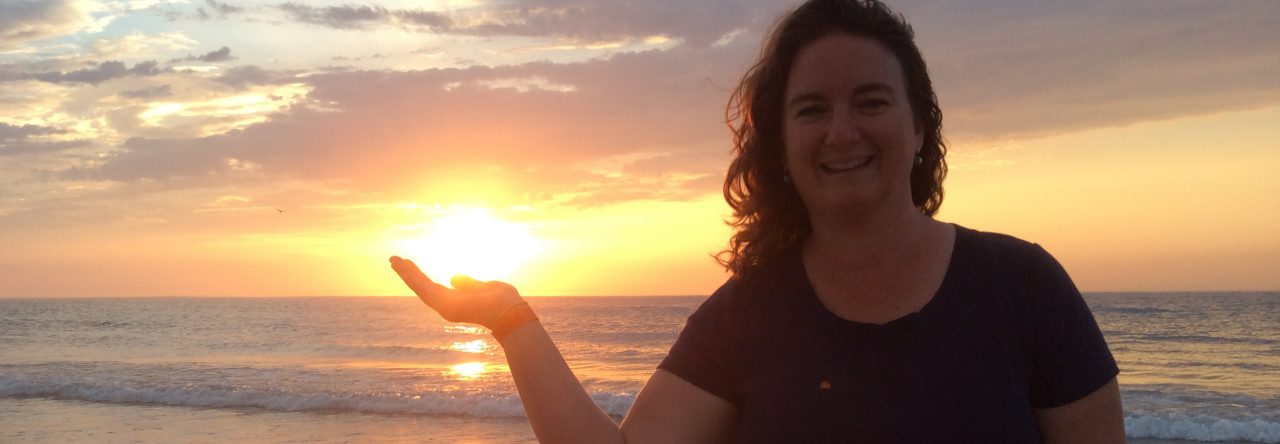Oh the joy of printmaking with children! Here is a lovely wintery scene we made recently in my preschool classroom!
Printmaking is one of my favorite process art invitations. I love gathering a variety of interesting materials to offer to my students to have them explore the process of printmaking. What I love is that ALL my students can find joy in the process and often express how much fun they have when making prints.


A new favorite tool that I found on Discount School Supply are these “Colorations Fingers and Hands Stampers” (set of 12)

I reached out to some other process loving educators to brainstorm a list of materials to explore. And because nothing is quite as satisfying as making a handy ABC order list to share with my GROWN UP students in my workshops and courses…I did just that this week!
{Drumroll please} Here is your very own access to the “ABCs of Printmaking Materials”. Hit reply and tell me what I missed…what is a material you love to use in printmaking that I left off the list! I’d love to hear about your process for doing printmaking with children! Or do you dabble in the FUN of printmaking yourself?!
ABC List of Printmaking Materials
- Alphabet magnets
- Balloons – inflate and dip in paint to make interesting paint circles, push different amounts to vary the size of the circles (make a snowman?)
- Bottle caps & milk jug lids
- Brayer roller – (ink roller) the hard rubber kind, if buying new get the 4in and 2.2 in – these are great for ink for older kids/adults, or experiment with liquid watercolors!
- Bubble wrap (makes great prints that look like snowballs falling from the sky)
- Burlap pieces ~ different weaves and textures; after the print making, perhaps chop up the painted burlap as a collage material?
- Cardboard cut into geometric shapes
- Cardboard tube – thick ones from Cricut vinyl rolls are really durable
- Clothespins with pieces of sponge (geometric shapes); extra clothespins as some kids like to attach things so their fingers stay paint free
- Cookie cutters
- Corrugated cardboard edges
- Cotton balls;
- Cotton rounds in 3 different sizes
- “Colorations Fingers and Hands Stampers” (set of 12) – see last pic in blog post, these are from Discount School Supply
- Dice
- Egg cartons – cut up into different shapes
- Fruit basket / berry baskets from the market – cut apart to make a snowflake shape
- G
- Hair combs – different widths and tooth sizes
- Hair rollers – different textures
- I
- Juice lids – like frozen OJ lids that are metal
- Kitchen tools – potato masher, small sieve, scrapers, spatulas
- Lace scraps
- Legos or Duplos
- Liners from candy boxes – different textures. Create a negative space print. (great excuse to buy and eat candy, too!)
- Mason jar rings
- Mesh bags that onions & oranges come in ~ snakeskin or mermaid effect
- Natural loose parts – from your stash: seashells,
- Organic plant material from your aread – go for a winter walk and gather: leaves, sticks, lichen, bark, pine leaf clusters, pinecones
- Packing peanuts
- Plastic woodland animals (or dinos) – make tracks in the snow!
- Pencil – use eraser end
- Q-tips
- Ribbon spools – empty circles that thin or thick ribbon comes on are great for printing larger circles as little hands can hold on to them!
- Shoes – children’s shoes can make great prints, like walking in the snow or mud using paint
- Soup cans with label off & ends cut off with a tool that makes them not sharp
- Spatula blades – cut different textures into them for printmaking – inspired by Princeton Catalyst blades https://www.dickblick.com/products/princeton-catalyst-blades-mini-blades/
- Sponges with different textures
- Styrofoam trays – cut into different shapes / use a chopstick to etch in designs to print (use a Brayer with liquid watercolor for finer detail)
- Thread spools – look for ones with different designs, narrow spools
- Tubes – especially those thick ones from vinyl from Cricut machines
- Toy cars or trucks – tracks with paint
- U
- Valentine chocolate boxes ~ add a bunch of heart shaped tools: heart cookie cutters
- Wine corks – different sizes
X - Yarn – string painting – dip in string and splat or print onto paper
- Yarn wrapped block – dip in paint and press onto paper, turn block different ways for different effects.
- Z
